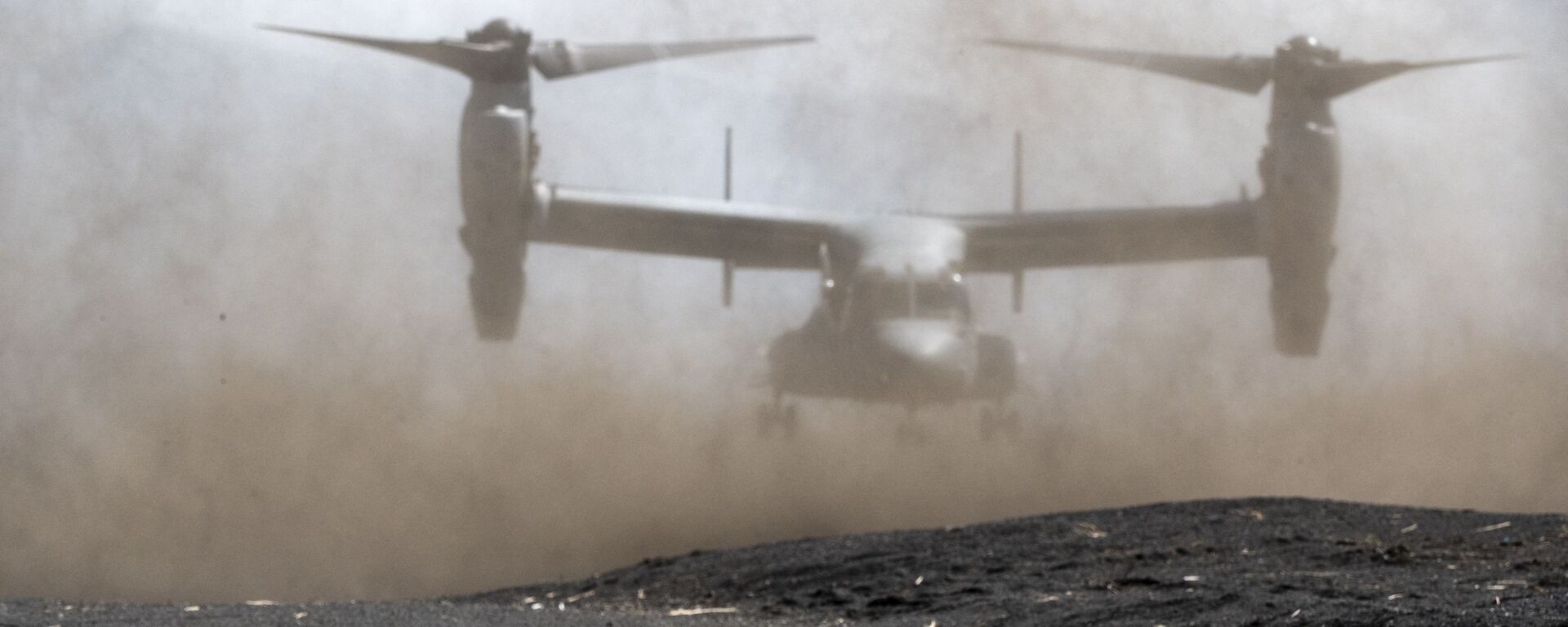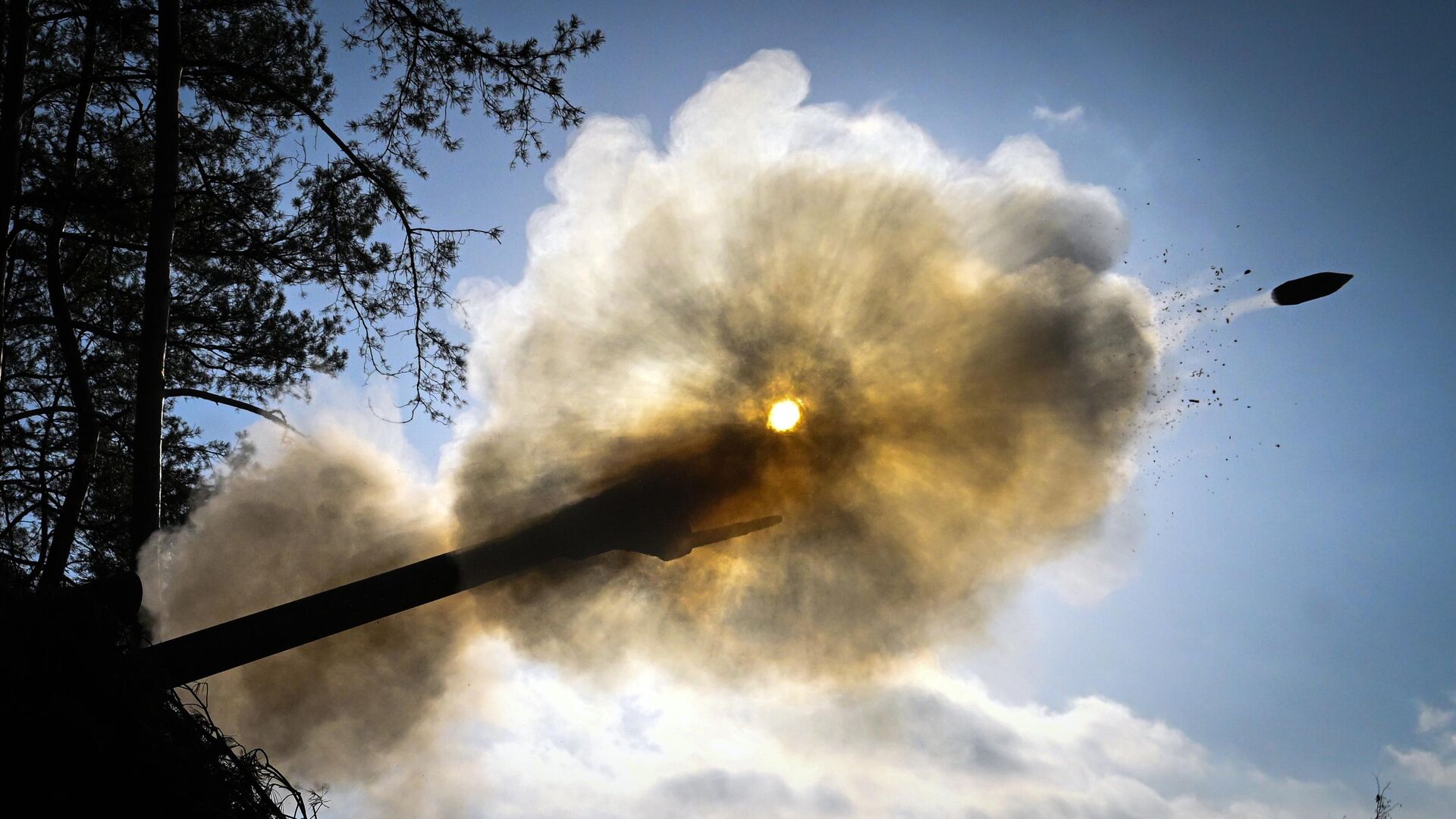https://sputnikglobe.com/20240417/us-army-struggles-to-develop-new-howitzer-for-close-range-artillery-combat-1117969649.html
US Army Struggles to Develop New Howitzer for Close-Range Artillery Combat
US Army Struggles to Develop New Howitzer for Close-Range Artillery Combat
Sputnik International
British newspaper The Telegraph reports the Pentagon has been attempting to create a next-generation howitzer since the early 1990s. The Army’s current iteration of armament, dates back to 1963.
2024-04-17T04:56+0000
2024-04-17T04:56+0000
2024-04-17T05:03+0000
military
military & intelligence
donald rumsfeld
ukraine
russia
us army
d-30
msta-s
2s5 giatsint
msta
https://cdn1.img.sputnikglobe.com/img/07e8/01/06/1116015856_0:58:3436:1991_1920x0_80_0_0_28f9c4252f1bdbcda1a9095eea42d0dd.jpg
The US Army is struggling to update a piece of equipment that’s been a staple of militaries since the 16th century.British newspaper The Telegraph reports the Pentagon has been attempting to create a next-generation howitzer since the early 1990s. The Army’s current iteration of armament, the M-109, dates back to 1963 although the basic design has undergone minor upgrades.Although the US Army has successfully developed long-range artillery such as the High-Mobility Artillery Rocket System (HIMARS), the failure to produce a new howitzer has turned into an embarrassment for the service as Ukraine has instead relied on European-produced howitzers.Russia has meanwhile excelled in the technology, utilizing a number of models including the D-20, the D-30, the 2S3 Akatsiya, the 2S19 Msta-S, and the 2S5 Giatsint-S. The truck-mounted 2S43 Malva, in service since last year, features a “fire assault” mode allowing the howitzer to obliterate a target with multiple projectiles moving along different trajectories. The armament is one of a number of pieces of Russian military technology that have wowed observers throughout the ongoing Russo-Ukraine war.
https://sputnikglobe.com/20231209/why-pentagon-has-trouble-taming-its-wild-v-22-osprey-1115501445.html
https://sputnikglobe.com/20240411/watch-russian-howitzer-prevail-in-artillery-duel-1117869838.html
ukraine
russia
Sputnik International
feedback@sputniknews.com
+74956456601
MIA „Rossiya Segodnya“
2024
John Miles
https://cdn1.img.sputnikglobe.com/img/07e8/01/19/1116388787_0:0:1316:1316_100x100_80_0_0_77e70d36afd983012b1c5d38ddb84156.jpg
John Miles
https://cdn1.img.sputnikglobe.com/img/07e8/01/19/1116388787_0:0:1316:1316_100x100_80_0_0_77e70d36afd983012b1c5d38ddb84156.jpg
News
en_EN
Sputnik International
feedback@sputniknews.com
+74956456601
MIA „Rossiya Segodnya“
Sputnik International
feedback@sputniknews.com
+74956456601
MIA „Rossiya Segodnya“
John Miles
https://cdn1.img.sputnikglobe.com/img/07e8/01/19/1116388787_0:0:1316:1316_100x100_80_0_0_77e70d36afd983012b1c5d38ddb84156.jpg
us howitzer, us howitzer designs, us struggles to create new howitzer, us new howitzer development, us howitzers, russia howitzers, crusader howitzer, future combat systems howitzer, extended range cannon artillery, 2s3 akatsiya, 2s19 msta-s, 2s5 giatsint-s, 2s43 malva, russian howitzers
us howitzer, us howitzer designs, us struggles to create new howitzer, us new howitzer development, us howitzers, russia howitzers, crusader howitzer, future combat systems howitzer, extended range cannon artillery, 2s3 akatsiya, 2s19 msta-s, 2s5 giatsint-s, 2s43 malva, russian howitzers
US Army Struggles to Develop New Howitzer for Close-Range Artillery Combat
04:56 GMT 17.04.2024 (Updated: 05:03 GMT 17.04.2024) The saga is a case study of the inefficiencies of the modern US military-industrial complex as the service has poured billions of dollars into failed development programs.
The US Army is struggling to update a piece of equipment that’s been a staple of militaries since the 16th century.
British newspaper The Telegraph
reports the Pentagon has been attempting to create a next-generation howitzer since the early 1990s. The Army’s current iteration of armament, the M-109, dates back to 1963 although the basic design has undergone minor upgrades.
1.
The service’s first attempt to develop a new howitzer, dubbed the Crusader, had a troubled history, first emerging as a more ambitious concept that was revised after the Cold War ended. Army contractor United Defense attempted to complete the design for a decade before it was
canceled by Defense Secretary Donald Rumsfeld, citing cost overruns.
2.
A new concept then emerged as part of the Army’s
Future Combat Systems, a modernization program that proposed a more lightweight howitzer operated by radio control.
Billions of dollars were again spent on the plan before its cancellation in 2009. New realities of electronic warfare made the concept unworkable while drone attacks call for weaponry that’s more armored instead of less.
3.
The Army’s third crack at updating the howitzer, the Extended Range Cannon Artillery (ERCA), took a more conservative approach mainly focusing on upgrading the armament’s barrel. By extending the length of the barrel to 30 feet the ERCA was able to strike targets from 46 miles away.
But testing revealed the longer barrel was less durable, susceptible to catastrophic explosions upon firing, and the concept was once again scrapped.
9 December 2023, 17:41 GMT
Although the US Army has successfully developed long-range artillery such as the High-Mobility Artillery Rocket System (HIMARS), the failure to produce a new howitzer has turned into an embarrassment for the service as Ukraine has instead relied on European-produced howitzers.
Russia has meanwhile excelled in the technology, utilizing a number of models including the D-20, the D-30, the 2S3 Akatsiya, the
2S19 Msta-S, and the
2S5 Giatsint-S. The truck-mounted
2S43 Malva, in service since last year, features a “fire assault” mode allowing the howitzer to obliterate a target with multiple projectiles moving along different trajectories. The armament is one of a number of pieces of Russian military technology that
have wowed observers throughout the ongoing Russo-Ukraine war.





